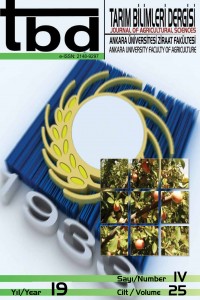Application of Bacteriocin-Like Inhibitory Substances (BLIS)-Producing Probiotic Strain of Lactobacillus plantarum in Control of Staphylococcus aureus in White-Brined Cheese Production
Abstract
The aim of this study was to investigate the antimicrobial activity of an autochthonous probiotic strain of bacteriocin-like inhibitory substances (BLIS)-producing Lactobacillus plantarum, previously isolated from a Tulum cheese and satisfied technological criteria as adjunct culture in cheese production, in reducing Staphylococcus aureus during production and ripening of white-brined cheeses. Cheeses were manufactured in two trials from pasteurized milk artificially contaminated with S. aureus to the mean level of 6.243 log MPN mL-1. Lb. plantarum BG33 was added at 1% as adjunct to the starter culture. The study was also carried out with control group cheeses produced without the adjunct culture. S. aureus counts were monitored for up to 90 days by BAM’s 5-tube MPN method and each positive tube of MPN (most probable number) method was confirmed by PCR amplification of a 400 bp fragment of the nuc gene, which encodes the thermostable nuclease of S. aureus. The capacity of Lb. plantarum BG33 to reduce S. aureus count was found as 0.9 log unit on the 18th day of ripening. After 39 and 59 days of ripening, Lb. plantarum BG33 lowered S. aureus count by 1.9 and 2.0 log units, respectively, when compared to control group cheeses in which it was lowered by 0.5 and 1.0 log units, respectively. As a result, the BLIS activity of Lb. plantarum BG33 throughout ripening of white-brined cheese could make it useful as bioprotective adjunct culture in white-brined cheese production to prevent S. aureus growth which is an important foodborne pathogen in respect of safe cheese production.inhibitory substances (BLIS)-producing Lactobacillus plantarum, previously isolated from a Tulum cheese and satisfied technological criteria as adjunct culture in cheese production, in reducing Staphylococcus aureus during production and ripening of white-brined cheeses. Cheeses were manufactured in two trials from pasteurized milk artificially contaminated with S. aureus to the mean level of 6.243 log MPN mL-1. Lb. plantarum BG33 was added at 1% as adjunct to the starter culture. The study was also carried out with control group cheeses produced without the adjunct culture. S. aureus counts were monitored for up to 90 days by BAM’s 5-tube MPN method and each positive tube of MPN (most probable number) method was confirmed by PCR amplification of a 400 bp fragment of the nuc gene, which encodes the thermostable nuclease of S. aureus. The capacity of Lb. plantarum BG33 to reduce S. aureus count was found as 0.9 log unit on the 18th day of ripening. After 39 and 59 days of ripening, Lb. plantarum BG33 lowered S. aureus count by 1.9 and 2.0 log units, respectively, when compared to control group cheeses in which it was lowered by 0.5 and 1.0 log units, respectively. As a result, the BLIS activity of Lb. plantarum BG33 throughout ripening of white-brined cheese could make it useful as bioprotective adjunct culture in white-brined cheese production to prevent S. aureus growth which is an important foodborne pathogen in respect of safe cheese production.
Keywords
Lactobacillus plantarum; Staphylococcus aureus; White-brined cheese; Bacteriocin; Bio-control
References
- Reference 1: Prof. Eugenia Bezirtzoglou Democritus University of Greece E-mail: empezirt@yahoo.gr
- Reference 2: Assoc. Prof. İlkin Yücel Şengün Ege University E-mail: ilkin.sengun@ege.edu.tr
- Reference 3: Assoc. Prof. Ali Topcu Hacettepe University E-mail: gali@hacettepe.edu.tr
Abstract
References
- Reference 1: Prof. Eugenia Bezirtzoglou Democritus University of Greece E-mail: empezirt@yahoo.gr
- Reference 2: Assoc. Prof. İlkin Yücel Şengün Ege University E-mail: ilkin.sengun@ege.edu.tr
- Reference 3: Assoc. Prof. Ali Topcu Hacettepe University E-mail: gali@hacettepe.edu.tr
Details
| Primary Language | English |
|---|---|
| Subjects | Engineering |
| Journal Section | Makaleler |
| Authors | |
| Publication Date | December 5, 2019 |
| Submission Date | May 15, 2018 |
| Acceptance Date | September 6, 2018 |
| Published in Issue | Year 2019 Volume: 25 Issue: 4 |
Cite
Cited By
Lactobacillus plantarum protective cultures to improve safety and quality of wheyless Domiati‐like cheese
Journal of Food Processing and Preservation
https://doi.org/10.1111/jfpp.16416
Journal of Agricultural Sciences is published as open access journal. All articles are published under the terms of the Creative Commons Attribution License (CC BY).


